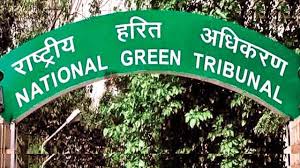The Principal Bench of the National Green Tribunal recently directed authorities to implement the “Vishwamitri River Action Plan”, including steps for removal of unauthorised structures, demarcation and protection of floodplain zone and other action points, as per the river restoration plan within three months.
The grievance in the application was against the Vishwamitri River front Development Project (VRDP) at Vadodara, Gujarat, in violation of environmental norms. Broad averments of the applicants are that the project violated the Environmental Impact Assistance (EIA) Notification, 2006, requiring prior environmental clearance, after assessment of the impact of the project on environment.
Paramount importance in river ecology is the presence of the highly protected species, the Indian crocodile (Crocodylus palustries- Mugger Crocodile) and turtles which are categorized nationally ‘vulnerable’, subsequent to an assessment following IUCN criteria for threatened species (Molur and Walker 1998) and has the highest legal protection in India. It is listed in Schedule I to the Indian Wildlife (Protection) Act, 1972.
The tribunal says –
Any activity against the survival of the highly protected species, without approval by the State Wildlife Board/National Wildlife Board and the Government of India, is illegal.
There were other illegal activities in the river, resulting in damage to the riverine ecology .The activities included dumping of solid waste, illegal constructions, etc. The flood water course changed because of illegal constructions. The construction activity commenced on or about 25.10.2015 to which objections were raised.
The tribunal noted that, petition first came up for hearing on 28.04.2016 when notice was issued to the respondents i.e. MoEF&CC and the authorities of the State of Gujarat. Vide order dated 25.05.2016, this Tribunal restrained the Vadodara Municipal Corporation (VMC), from proceeding with development activities within the area of VRDP project.
The VMC taking its stand that the project has not yet been finalized and it was only at conceptual stage. The project was to beautify and rejuvenate the river for the benefit of the general public.
The court considered the fact that Vishwamitri River is one of 351 identified polluted river stretches, identified as such by the Central Pollution Control Board. The issue of rejuvenation of the said polluted river stretches has been exhaustively considered by this Tribunal.
Read Also: Supreme Court releases accused on bail after determining trial will take time
The bench headed by NGT Chairperson Justice Adarsh Kumar Goel noted that the constitution of a River Rejuvenation Committee in each State/UT to prepare and execute an action plan for restoration of each of such polluted stretches to give effect to the rule of law in a time-bound manner is at utmost importance. Such action plans have been prepared and approved by the CPCB and their execution is to be overseen by the Chief Secretary in the State and Central Monitoring Committee headed by the Secretary, Ministry of Jalshakti at the National level.


